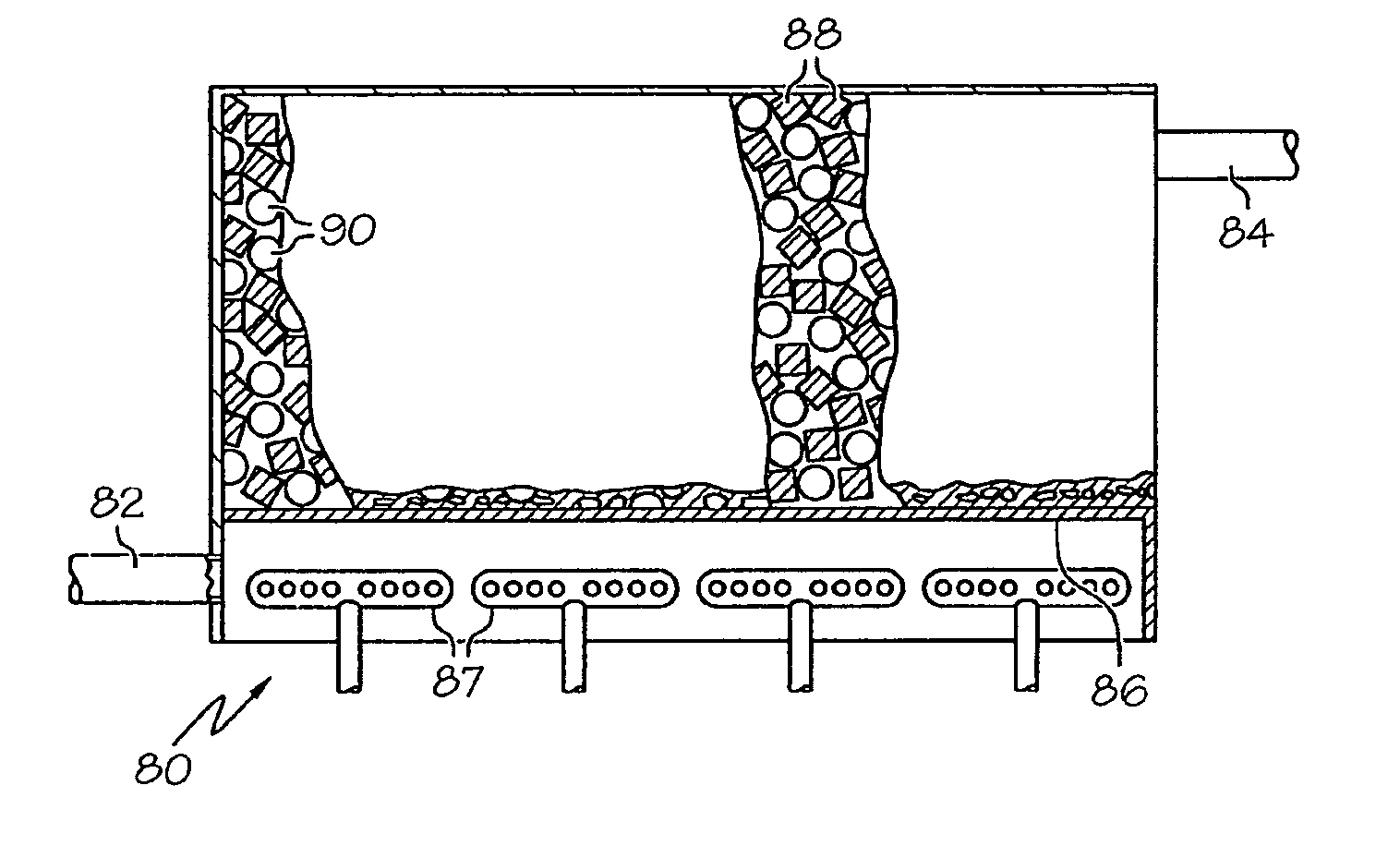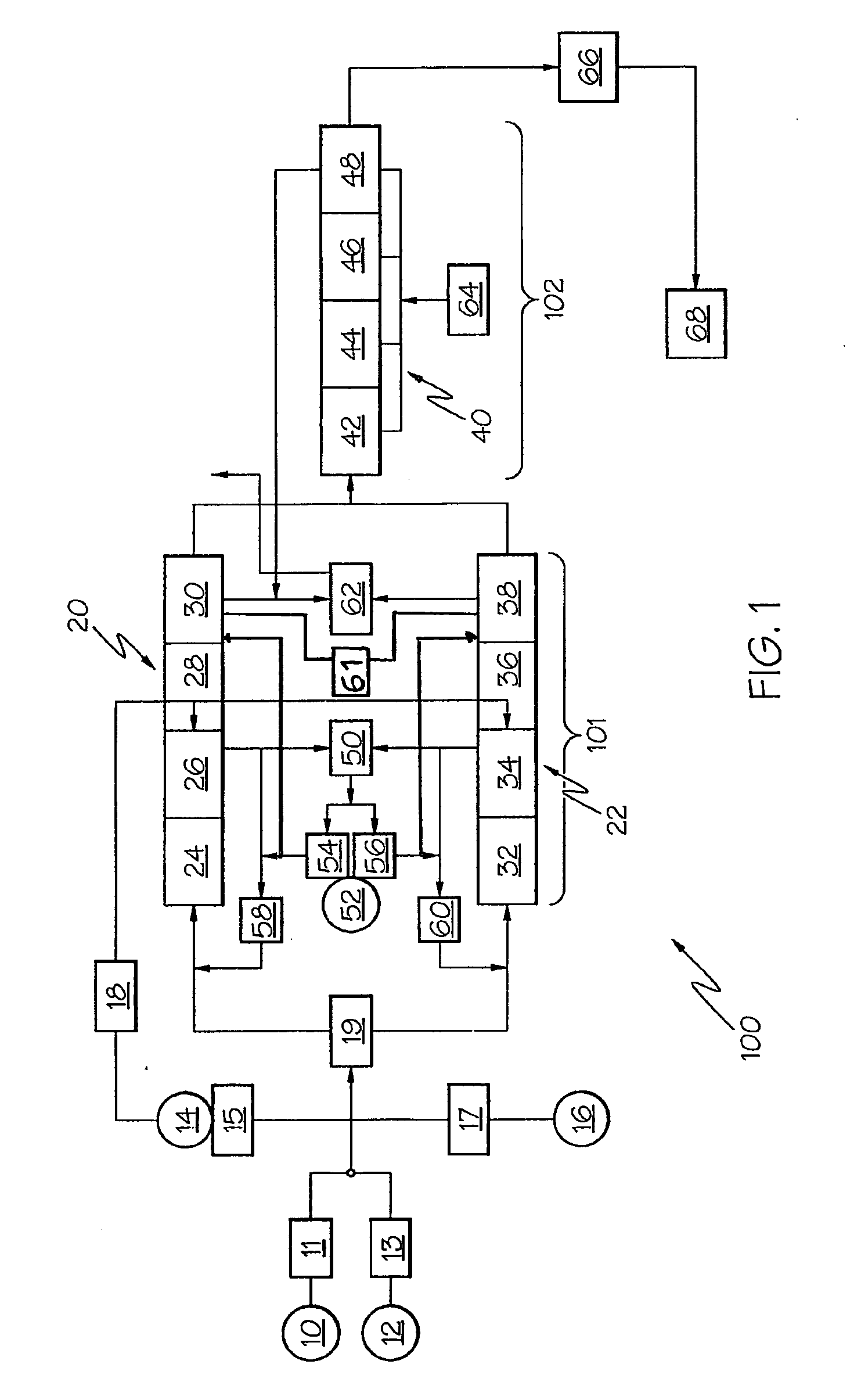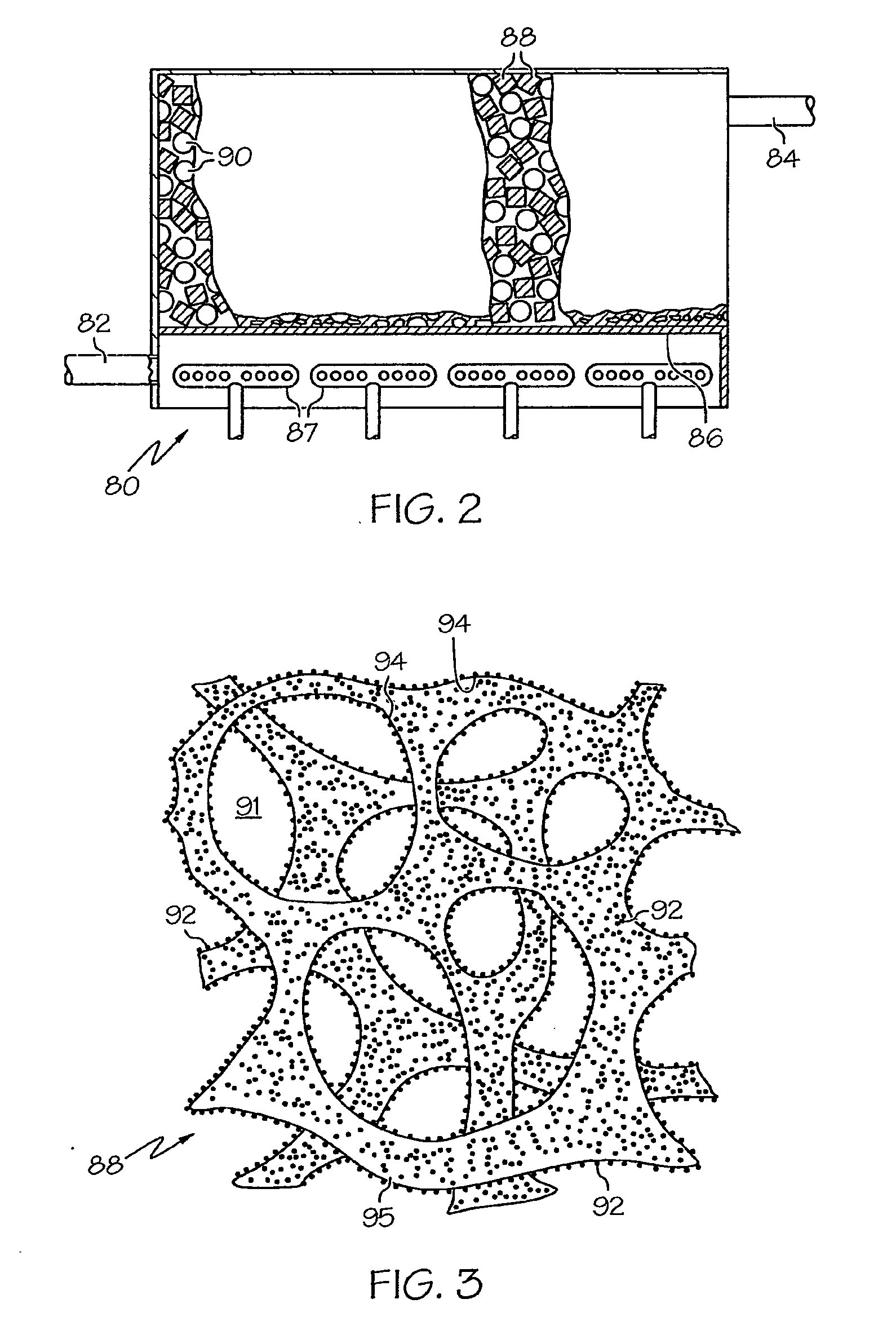System and methods for biological selenium removal from water
a biological selenium and water technology, applied in the field of systems and methods for removing pollutants from water, can solve the problems of large time and machinery, large cost, and high cost of selenium removal from mine drainage and irrigation water, and achieve the effect of reducing the cost of selenium removal
- Summary
- Abstract
- Description
- Claims
- Application Information
AI Technical Summary
Benefits of technology
Problems solved by technology
Method used
Image
Examples
Embodiment Construction
[0013]The following detailed description of the invention is merely exemplary in nature and is not intended to limit the invention or the application and uses of the invention. Furthermore, there is no intention to be bound by any theory presented in the preceding background of the invention or the following detailed description of the invention.
[0014]FIG. 1 is a flow diagram illustrating a system 100, and its various components, for removal of selenium from waste water according to an exemplary embodiment of the invention. The system 100 includes an anaerobic immobilized cell bioreactor (ICB) 101 and an aerobic ICB 102 in series. A pair of lagoons 10 and 12 supply waste water to the system 100 using a pair of respective pumps 11 and 13. Although two lagoons are included in the illustrated embodiment, the waste water may be supplied from a single lagoon, and a single pump may be used to supply the waste water to the system 100. Likewise, more than two lagoons and / or pumps may be use...
PUM
| Property | Measurement | Unit |
|---|---|---|
| volume ratio | aaaaa | aaaaa |
| particulate size | aaaaa | aaaaa |
| volume ratio | aaaaa | aaaaa |
Abstract
Description
Claims
Application Information
 Login to View More
Login to View More - R&D
- Intellectual Property
- Life Sciences
- Materials
- Tech Scout
- Unparalleled Data Quality
- Higher Quality Content
- 60% Fewer Hallucinations
Browse by: Latest US Patents, China's latest patents, Technical Efficacy Thesaurus, Application Domain, Technology Topic, Popular Technical Reports.
© 2025 PatSnap. All rights reserved.Legal|Privacy policy|Modern Slavery Act Transparency Statement|Sitemap|About US| Contact US: help@patsnap.com



